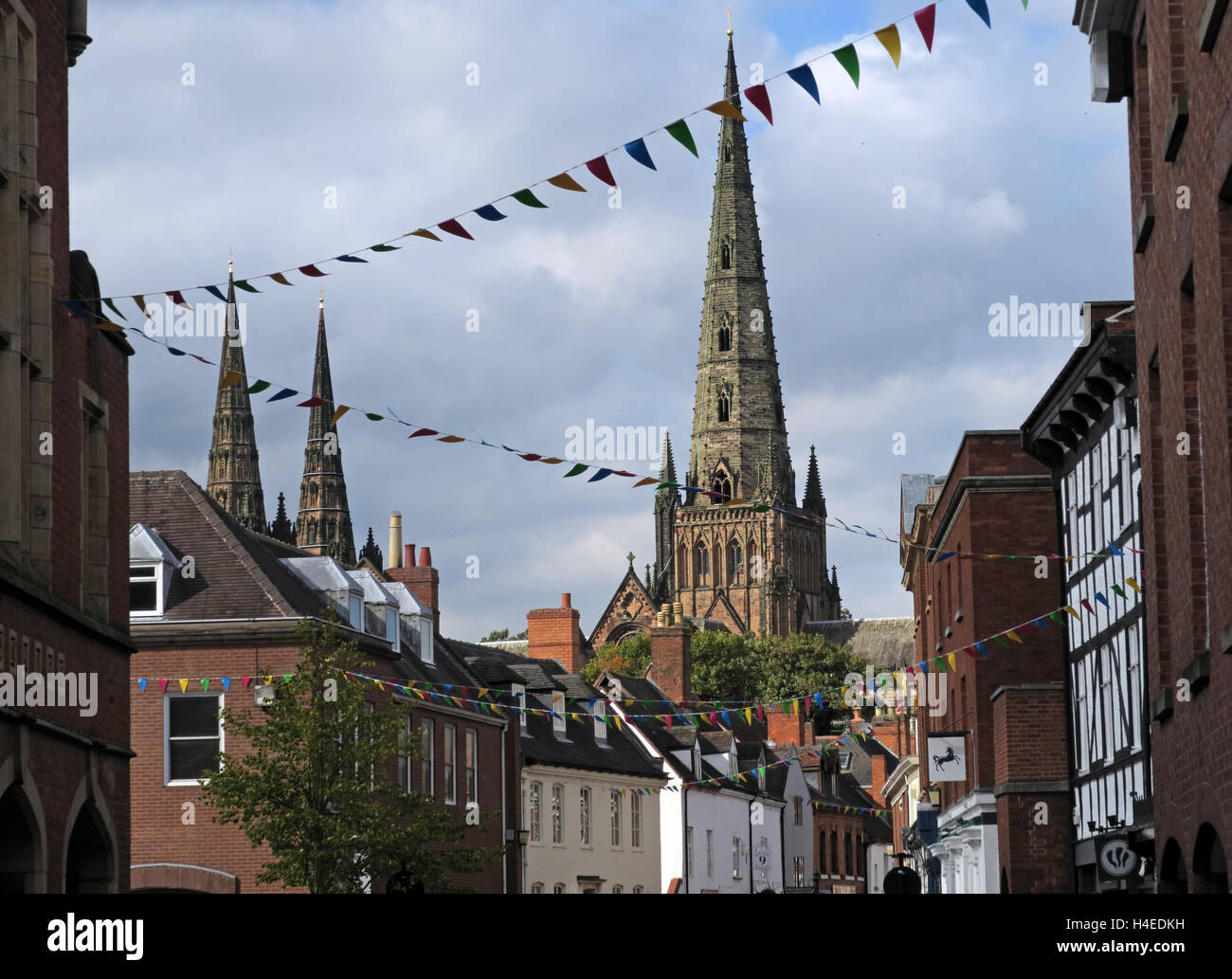Lichfield city centre, with cathedral, Staffordshire, England, UK

Image details
Contributor:
Tony Smith / Alamy Stock PhotoImage ID:
H4EDKHFile size:
49.8 MB (1.8 MB Compressed download)Releases:
Model - no | Property - noDo I need a release?Dimensions:
4896 x 3552 px | 41.5 x 30.1 cm | 16.3 x 11.8 inches | 300dpiDate taken:
4 October 2016More information:
Lichfield is a cathedral city and civil parish[3] in Staffordshire, England. One of eight civil parishes with city status in England, Lichfield is situated roughly 16 mi (26 km) north of Birmingham. At the time of the 2011 Census the population was estimated at 32, 219 and the wider Lichfield District at 100, 700. Notable for its three-spired medieval cathedral, Lichfield was the birthplace of Samuel Johnson, the writer of the first authoritative Dictionary of the English Language. The city's recorded history began when Chad of Mercia arrived to establish his Bishopric in 669 AD and the settlement grew as the ecclesiastical centre of Mercia. In 2009, the Staffordshire Hoard, the largest hoard of Anglo-Saxon gold and silver metalwork, was found 5.9 km (3.7 mi) south-west of Lichfield. The development of the city was consolidated in the 12th century under Roger de Clinton, who fortified the Cathedral Close and also laid out the town with the ladder-shaped street pattern that survives to this day. Lichfield's heyday was in the 18th century, when it developed into a thriving coaching city. This was a period of great intellectual activity, the city being the home of many famous people including Samuel Johnson, David Garrick, Erasmus Darwin and Anna Seward, and prompted Johnson's remark that Lichfield was "a city of philosophers". Today, the city still retains its old importance as an ecclesiastical centre, and its industrial and commercial development has been limited. The centre of the city has over 230 listed buildings (including many examples of Georgian architecture), and preserves much of its historic character.